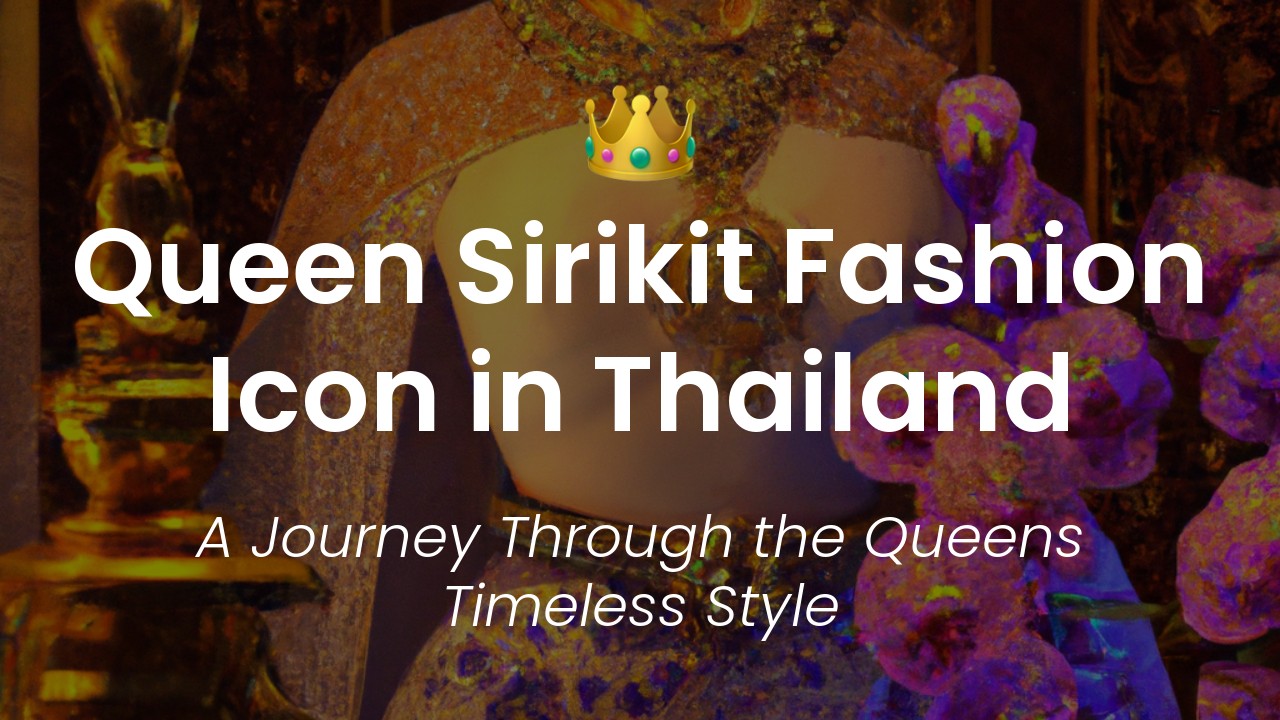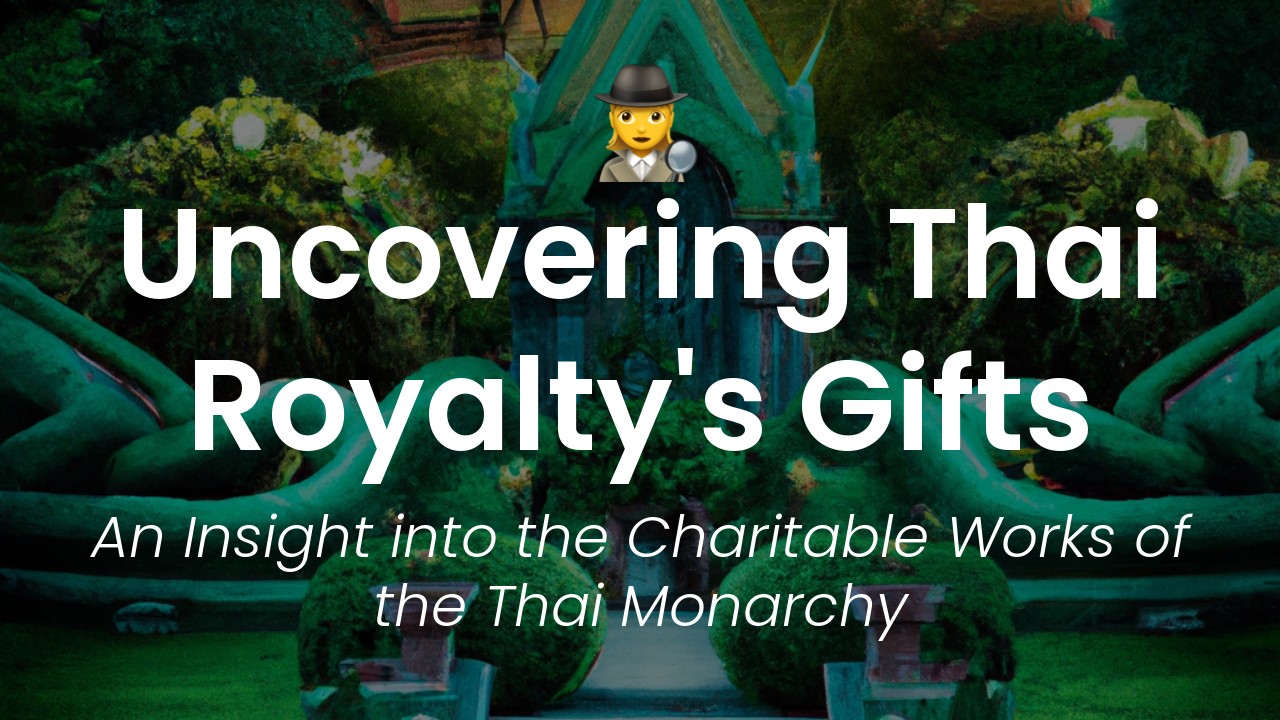As a Thai woman, I am always fascinated by the history of the Thai monarchy and the role it has played in our country's fashion landscape. When it comes to fashion, Queen Sirikit stands out as one of the most influential figures in recent Thai history. With her impeccable taste, grace, and elegance, she has left a lasting legacy that still influences Thai fashion to this day. In this article, I would like to take you on a journey through the fashion legacy of Queen Sirikit and explore the many ways in which she has inspired Thai fashion over the years.
Queen Sirikit, born in 1932, is the wife of the late King Bhumibol Adulyadej, who ruled Thailand for over 70 years. She was crowned as the Queen of Thailand in 1950 and since then, has been known for her unique fashion sense which is a mix of traditional Thai motifs and Western influences. Her elegant, chic and graceful style has been admired by not only the people of Thailand but also by people all around the world.
Throughout her life, Queen Sirikit has made it a point to promote Thai silk and traditional Thai fabrics. In fact, her love for Thai silk is so great that she even created her own Foundation to support its preservation and promotion. It is said that Queen Sirikit's influence on the Thai fashion industry cannot be overstated, and many Thai designers have been inspired by her style and techniques over the years. In this article, we will delve deeper into the various ways in which Queen Sirikit has influenced Thai fashion, and how her legacy continues to inspire designers today.
Early Life and Interest in Fashion
Queen Sirikit was born into a privileged life in Bangkok on August 12, 1932, as the daughter of the Thai ambassador to France. She spent her childhood and teenage years in Europe, studying at international schools in Lausanne and Paris. This international exposure gave her a modern, cosmopolitan perspective on fashion.
Queen Sirikit’s love affair with fashion began at a young age. Her mother and grandmother were known for their impeccable fashion sense, and Queen Sirikit inherited their appreciation for beautiful clothing. While studying in Europe, she was exposed to the latest trends in Western fashion, which she eagerly incorporated into her own style.
Queen Sirikit's Introduction to Thai Silks
In 1950, at the age of 18, Queen Sirikit made her first visit to Thailand as part of an official delegation. It was during this trip that she first encountered the rich tradition of Thai silk. She was struck by the intricate patterns and vibrant colors of the textiles, which were unlike anything she had seen before.
The Queen recognized the potential of Thai silk as a medium for high fashion and began promoting it to the world. She encouraged local weavers to create new designs and patterns, and she worked with Thai fashion designers to bring these fabrics to life.
Modernizing Traditional Thai Clothing
Prior to Queen Sirikit’s intervention, Thai clothing tended to be conservative and traditional. Women wore long, flowing dresses called ‘chut thai’, which were not well-suited for the fast-paced modern world.
Queen Sirikit recognized the value of tradition but also saw the need to modernize and adapt Thai clothing to contemporary tastes. She began collaborating with local designers to create new styles that incorporated Thai textiles but also had a more modern, streamlined silhouette.
One of her most iconic designs is the ‘Sarong Kebaya,’ a fitted blouse and sarong combination that is both elegant and practical. The design has been worn by women all over the world and remains a classic example of Queen Sirikit’s fashion legacy.
Collaboration with International Designers
Queen Sirikit was not satisfied with simply modernizing traditional Thai clothing; she wanted to make Thai fashion a global phenomenon. To this end, she collaborated with international designers to create new, exciting pieces that incorporated Thai textiles.
One of her most famous collaborations was with French fashion designer Pierre Balmain. In 1960, Queen Sirikit commissioned Balmain to create a collection of Thai-inspired evening gowns. Balmain spent several months in Thailand studying local textiles and working with Thai weavers to create fabrics that would work in his designs.
The resulting collection was a resounding success and helped put Thai fashion on the international map. Queen Sirikit continued to work with Balmain and other notable designers throughout her reign, helping to bring Thai fashion to the forefront of the industry.
Personal Style and Impact on Fashion Industry
Queen Sirikit’s personal style was a combination of classic elegance and modern sophistication. She favored tailored pieces in bold colors and prints, and she was known for her impeccable taste in accessories. Her signature look included beautiful brooches, pearls, and statement rings.
Her impact on the fashion industry was immense. She helped to transform Thai fashion from a niche industry to a global phenomenon. Her advocacy for Thai silk and support for local designers helped to preserve and promote traditional Thai textiles, while also making them relevant to modern audiences.
Legacy and Continued Influence on Thai Fashion
Queen Sirikit’s fashion legacy lives on today. Her designs and collaborations continue to inspire and influence contemporary Thai fashion designers, who are pushing the boundaries of tradition to create new and exciting pieces.
Many of the techniques and designs that Queen Sirikit helped to develop are still in use today, and her impact on the fashion industry can still be felt around the world. She is a true icon of Thai fashion and a symbol of the country’s rich cultural heritage.







